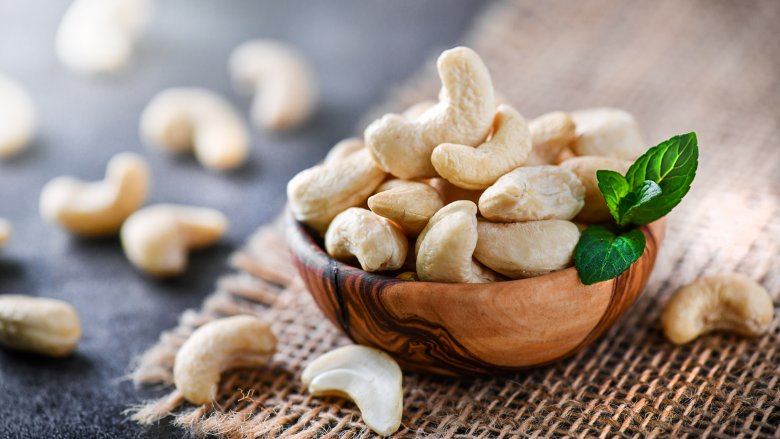The Reason Cashews Aren't Sold In Their Shells
Cashews have become much more than just one of Oprah's go-to choices for a snack. Get creative in the kitchen and you can create cashew-based recipes you never thought possible, like dairy-free cream cheese. Any way you serve them up, though, one thing is for certain: You won't ever find them in the shell. Why not? It turns out there's a very good reason cashews aren't sold in their shells, and even if they were, you wouldn't want to touch them.
The truth is, cashews aren't even nuts. They're actually fruit from a cashew tree. If you were to see a cashew before picking, you'd find it attached to an apple-shaped object in a tree. The fruits of that "apple" are the kidney-shaped growths that form on the end called drupes (via Parade). Those drupes will eventually become what we know as cashews, but the process in between is essential to making them edible. The shells of cashews contain anacardic acid. This type of acid is extremely toxic, and according to HuffPost can cause allergies and irritation similar to that of poison ivy. So, once cashews are pulled from the tree, they are placed in the sun to dry. In order to eliminate these toxins, after the cashews are dried out, they are then removed from their shells and steamed or roasted. This final process ensures all poisons are removed before eating.
It's an extensive process for such a tiny nut, and one that can be quite dangerous, which explains the high cost of this tasty snack. Primarily cultivated in Brazil, India, and Vietnam, those handling cashews during the deshelling process have suffered injury from the toxic shells. One worker explained, "I would sometimes inhale the dust from the skins, and that would make me cough. If the fluid from the hard outer husk got on your hands, it made a burn." Workers are often forced into processing cashews as part of a drug rehabilitation program working long hours for little or no pay (via Time). In the case of cashews, it seems the shells are not the only concern.
